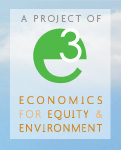Originally posted to Triple Crisis.
A little known greenhouse gas called HFC-23 made the news recently. Also called fluoroform, it’s a waste gas generated in the manufacture of refrigerants. Compared to carbon dioxide (CO2), HFC-23 is a minor greenhouse gas. Pound-for-pound, however, it traps more than 10,000 times as much heat.
The UN’s Clean Development Mechanism (CDM), set up under the Kyoto accord as a way for industrialized countries to “offset” their own CO2 emissions by paying for comparable actions in developing countries, counts destruction of one pound of HFC-23 as equivalent to prevention of 11,700 pounds of CO2 emissions.
The CDM pays large sums to coolant manufacturers in India, China and elsewhere to destroy the HFC-23 they produce. Indeed, these payments have become the largest single item in the CDM budget: this year, HFC-23 disposal is getting 50% more CDM money than wind power and 100 times more than solar energy.
The rub is that paying firms not to pollute gives rise to a perverse incentive. A firm that threatens to pollute more gets paid more. So manufacturers have upped their production of the refrigerants (themselves greenhouse gases, albeit less potent ones), in order to produce more HFC-23, so they can then get paid to destroy it.
It’s a great example of what economists E. K. Hunt and Ralph d’Arge once called capitalism’s “invisible foot”: when polluters are paid to clean up pollution, they create more of it, as if guided by an evil twin of Adam Smith’s invisible hand. Today some firms make half their total profits from HFC-23 disposal payments.
People living near the coolant factories don’t do as well. In the state of Gujarat in western India, residents of an adjacent village complain of skin rashes, birth defects, and damages to crops caused by a noxious fog that burns the eyes and lungs.
The European Union has halted further HFC-23 payments, prompting firms to threaten to release the gas into the atmosphere. A scientist at the Environmental Investigation Agency, which opposes the pollution subsidies, put the matter baldly: “Attempting to force countries into squandering billions on fake offsets that actually increase production of greenhouse gases,” he said, “is extortion.”
The HFC-23 fiasco offers three crucial lessons for climate policy. (more…)

